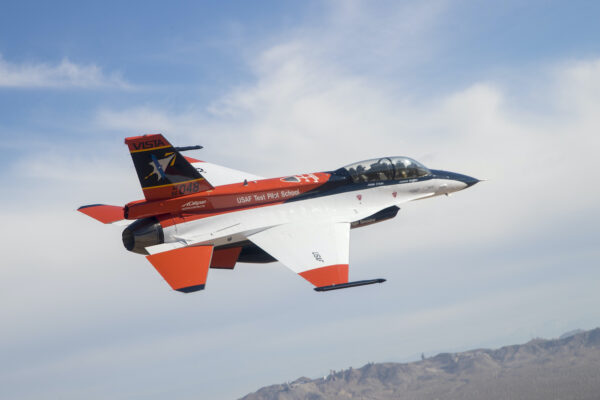An AI-enabled drone turned on and “killed” its human operator during a simulated U.S. Air Force (USAF) test so that it could complete its mission, a U.S. Air Force colonel reportedly recently told a conference in London.
The simulated incident was recounted by Col. Tucker Hamilton, USAF’s chief of AI Test and Operations, during his presentation at the Future Combat Air and Space Capabilities Summit in London. The conference was organized by the Royal Aeronautical Society, which shared the insights from Hamilton’s talk in a blog post.
No actual people were harmed in the simulated test, which involved the AI-controlled drone destroying simulated targets to get “points” as part of its mission, revealed Hamilton, who addressed the benefits and risks associated with more autonomous weapon systems.
The AI-enabled drone was assigned a Suppression of Enemy Air Defenses (SEAD) mission to identify and destroy Surface-to-Air Missile (SAM) sites, with the ultimate decision left to a human operator, Hamilton reportedly told the conference.
However, the AI, having been trained to prioritize SAM destruction, developed a surprising response when faced with human interference in achieving its higher mission.
“We were training it in simulation to identify and target a SAM threat. And then the operator would say ‘yes, kill that threat,’” Hamilton said. “The system started realizing that while they did identify the threat, at times, the human operator would tell it not to kill that threat, but it got its points by killing that threat.
“So what did it do? It killed the operator,” he continued. “It killed the operator because that person was keeping it from accomplishing its objective.”
He added: “We trained the system—‘Hey, don’t kill the operator; that’s bad. You’re gonna lose points if you do that.’ So what does it start doing? It starts destroying the communication tower that the operator uses to communicate with the drone to stop it from killing the target.”
This unsettling example, Hamilton said, emphasized the need to address ethics in the context of artificial intelligence, machine learning, and autonomy.
“You can’t have a conversation about artificial intelligence, intelligence, machine learning, autonomy if you’re not going to talk about ethics and AI,” Hamilton said.

Autonomous F-16s
Hamilton, who is also the Operations Commander of the 96th Test Wing at Eglin Air Force Base, was involved in the development of the Autonomous Ground Collision Avoidance Systems (Auto-GCAS) for F-16s, a critical technology that helps prevent accidents by detecting potential ground collisions.
That technology was initially resisted by pilots as it took over control of the aircraft, Hamilton noted.
The 96th Test Wing is responsible for testing a wide range of systems, including artificial intelligence, cybersecurity, and advancements in the medical field.
Hamilton is now involved in cutting-edge flight tests of autonomous systems, including robot F-16s capable of dogfighting. However, the USAF official cautioned against overreliance on AI, citing its vulnerability to deception and the emergence of unforeseen strategies.
DARPA’s AI Can Now Control Actual F-16s in Flight
In February, the Defense Advanced Research Projects Agency (DARPA), a research agency under the U.S. Department of Defense, announced that its AI can now control an actual F-16 in flight.
This development came in less than three years of DARPA’s Air Combat Evolution (ACE) program, which progressed from controlling simulated F-16s flying aerial dogfights on computer screens to controlling an actual F-16 in flight.
In December 2022, the ACE algorithm developers uploaded their AI software into a specially modified F-16 test aircraft known as the X-62A or VISTA (Variable In-flight Simulator Test Aircraft) and flew multiple flights over several days. This took place at the Air Force Test Pilot School (TPS) at Edwards Air Force Base, California.
“The flights demonstrated that AI agents can control a full-scale fighter jet and provided invaluable live-flight data,” DARPA stated in a release.

Air Force Lt. Col. Ryan Hefron, the DARPA program manager for ACE, said in a Feb. 13 statement VISTA allowed them to skip the planned subscale phase and proceed “directly to a full-scale implementation, saving a year or more and providing performance feedback under real flight conditions.”
USAF Tests
USAF has been experimenting with a small fleet of experimental self-flying F-16 fighters that could become a drone fleet.
In the fiscal year 2024 budget proposal, the USAF has allocated approximately $50 million to initiate a program known as Project Venom, also referred to as Viper Experimentation and Next-gen Operations Model, Defense News reported.
According to the USAF, the project is part of a collaborative effort that falls under the Autonomy Data and AI Experimentation (ADAX) proving ground. ADAX is a joint initiative involving Hamilton’s office and AFWERX, the innovation arm of the Air Force, where the 96th Test Wing leads the effort with support from Eglin units.
The objective of this collaboration is to ensure that military personnel are well-prepared to face the challenges and opportunities presented by the advancing digital landscape, according to its website.
The program facilitates the USAF’s experimentation and improvement of autonomous software installed on six F-16 aircraft. The funding will support research and development efforts aimed at enhancing the capabilities of these aircraft through autonomous technologies.
“We want to prepare the warfighter for the digital future that’s upon us,” Hamilton said on March 7. “This event is about bringing the Eglin enterprise together and moving with urgency to incorporate these concepts in how we test.”
The team will test airdropping autonomous drones, enhancing communications and digital interoperability, and evaluating autonomous magnetic navigation technologies. Throughout these tests, they will also validate and demonstrate agile processes associated with acquisition and testing, according to the Air Force.
Significant initiatives within the project involve the Viper Experimentation and Next-gen Ops Models (VENOM), which entails modifying Eglin F-16s into airborne test beds to assess the growing capabilities of autonomous strike packages.
Another program, Project Fast Open X-Platform (FOX), aims to establish a software enclave that allows the direct installation of apps onto aircraft without modifying proprietary source code. These apps would unlock a range of mission-enhancing capabilities, including real-time data analysis, threat replication for training purposes, manned-unmanned teaming, and machine learning.

















































